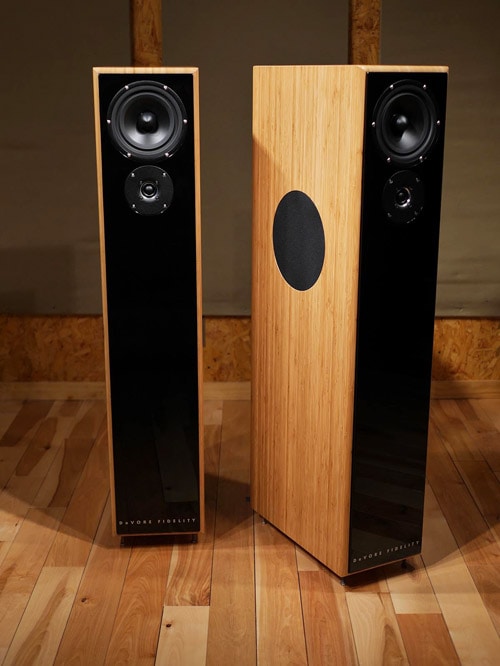Like many other audio companies, DeVore Fidelity began as a hobby. Designer/owner John DeVore graduated from RISD (the Rhode Island School of Design, in Providence—alumni include Seth McFarlane, Marin Mull, Dale Chihuly, Nicole Miller and most of the Talking Heads), played drums in a number of bands, and worked as a salesman at both Sound By Singer and Stereo Exchange in Manhattan.DeVore “always built [speakers]”, as he puts it, beginning while at RISD in 1986. During his time in retail he was able to compare his creations with well-known audiophile favorites. In the late ‘90’s he built a design which worked particularly well, and he christened it “The Gibbon”. The name was partly a playful reaction to the hyper-serious product names often found in audio, and partly an homage to his uncle Irven DeVore, a well-known primatologist and anthropologist. The practice still continues: DeVore’s three product lines are the Gibbons, Orangutans, and Silverbacks.

The whimsical entry to DeVore Fidelity’s shop in the industrial-strength Brooklyn Navy Yard.
Beginning DeVore Fidelity in 2000, DeVore was able to leave retail in 2001, and devote all his time to designing and building speakers. In that year he moved his shop to the Brooklyn Navy Yard in order to be closer to cabinetmaker Anthony Abbate; a year later, the two moved to a larger shared space in the ‘Yard, where they still are.

Do I really need to label this? This place is huge, with dozens of giant buildings.
The company made a major splash around 2002 with the Gibbon Eight, a slender two-way that featured proprietary crossover topology, a side-firing port and a tweeter placed below the midrange, elements found in many DeVore designs. Much of the Eight’s notoriety came from the fact that several initial review samples went out, and never came back: all the reviewers bought them. Later updates included the Super Eight and 88; the Nines and (most recently) the 3- way Xs followed.
 The
The
The Gibbon X (Photo from DeVore Fidelity).
DeVore’s designs have always been more efficient than your average monkey coffins (a term used by the late Harvey “Gizmo” Rosenberg which seems perversely apt in this case), with sensitivity around 90 or 91 dB and an uncommonly easy load. Because of these characteristics, Gibbons were often found paired with tube or low-powered SET (single-ended triode) amplifiers.

The O/96 (Photo from DeVore Fidelity).
Maximizing designs to pair well with low-powered SETs, DeVore introduced the Orangutan series, broad-baffled two-way speakers with largish woofers that bring to mind a new-millenial take on classic designs like the Altec Valencias. The O-93 is a floorstander with a 10″ paper cone woofer and a silk-dome tweeter mounted in a slight horn; the O-96 is a standmounted floorstander (if you can follow that), with similar drivers to those in the 93, but with beefier motor structures on both. As you might expect, the models are 93 and 96 dB efficient.
So what does the future hold for DeVore Fidelity? Short term, perhaps an “Uber-Orangutan”, with hyper-tweaked drivers and even a little more sensitivity than the O-96. Beyond that, who knows? DeVore’s combination of musicality, flawless worksmanship and puckish originality is unlikely to go out of style.
And thank goodness for that.


